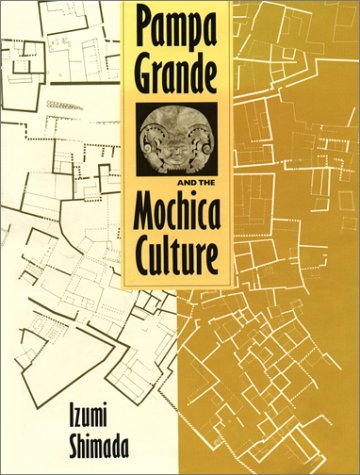Pampa Grande and the Mochica Culture] demonstrates what archaeologists can achieve in terms of reading cultural meaning from the material record. . . . Clear, thoughtful, detailed, and balanced, it is one of the finest treatments of a prehistoric culture that I have ever read. -- Latin American Indian Literatures Journal In Shimada's elegantly illustrated, well argued and documented book, he undertakes the task of exploring the complex causes for the transition registered between Moche-IV and Moche-V, and for the rise and fall of the] last great Mochica civic experiment, Pampa Grande. But far more is offered, for Shimada embarked on a brilliant critical re-evaluation of what is known and still enigmatic about the long-lived Mochica cultural tradition in the Peruvian North Coast.... .Using a multidisciplinary approach Shimada weaves a richly patterned tapestry of Mochica prehistory. It is required reading for archaeologists interested in Latin America. -- Antiquity There is no work whatever at this time that presents the urban configuration and composition of a Moche city, so Shimada's] considerable data on this topic will be very valuable for scholars of urbanism of the Moche, of the North Coastal region and, for comparative purposes, of Andean culture in general. -- Garth Bawden, director, Maxwell Museum of Anthropology, and professor of anthropology, University of New Mexico Pampa Grande, the largest and most powerful city of the Mochica (Moche) culture on the north coast of Peru, was built, inhabited, and abandoned during the period A.D. 550-700. It is extremely important archaeologically as one of the few pre-Hispanic cities in South America for which thereare enough reliable data to reconstruct a model of pre-Hispanic urbanism. This book presents a biography of Pampa Grande that offers a reconstruction not only of the site itself but also of the sociocultural and economic environment in which it was built and abandoned. Izumi Shimada argues that Pampa Grande was established rapidly and without outside influence at a strategic position at the neck of the Lambayeque Valley that gave it control over intervalley canals and their agricultural potential and allowed it to gain political dominance over local populations. Study of the site itself leads him to posit a large resident population made up of transplanted Mochica and local non-Mochica groups with a social hierarchy of at least three tiers.
- ISBN10 0292776748
- ISBN13 9780292776746
- Publish Date 31 October 1994
- Publish Status Out of Print
- Out of Print 13 July 2009
- Publish Country US
- Imprint University of Texas Press
- Format Hardcover
- Pages 323
- Language English
